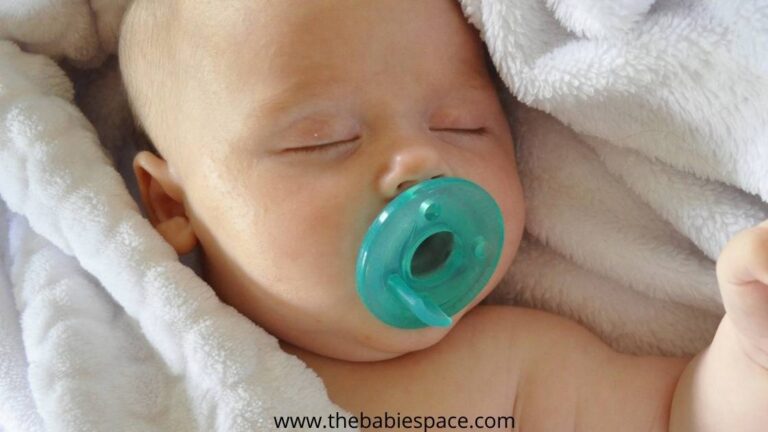How to Install a Baby Car Seat: A Step-by-Step Guide for Safe Travel

Installing a baby car seat is a vital skill for any new parent. Proper installation ensures that the car seat will protect the baby in the event of a crash. Understanding the steps involved can make a significant difference in safety.
Table of Contents
Many parents are unaware that approximately three out of four car seats are improperly installed. This statistic highlights the importance of learning the correct techniques to secure the seat correctly. With the right guidance, anyone can master the process and gain peace of mind.
This article will provide clear, step-by-step instructions on how to install a baby car seat safely. Simple tips and advice are included to help parents navigate this important task with confidence.
Understanding Car Seat Types
Choosing the right car seat is crucial for a child’s safety during travel. Different types of car seats cater to various age groups and sizes, ensuring that every child is secure in a vehicle.
Infant Car Seats
Infant car seats are designed for newborns and small babies, typically weighing up to 30 to 35 pounds. They are always installed in a rear-facing position, which is safer for infants. The seat provides support for a baby’s head, neck, and spine.
These seats often come with a base that stays in the car, allowing for easy transfer of the seat without disturbing the baby. It is essential to follow the manufacturer’s instructions for installation and ensure the seat is level to avoid injury during rides. Parents should also check height and weight limits specified by the car seat brand to ensure proper use.
Convertible Car Seats
Convertible car seats can be used in both rear-facing and forward-facing positions. They accommodate infants and toddlers, typically from birth to around 65 pounds. Using them in the rear-facing position is recommended for as long as possible, as this is the safest option.
Once a child outgrows the rear-facing option, the seat can be turned to face forward. Parents should ensure the harness is snug and the chest clip is at armpit level for safety. Convertible car seats offer longevity and value, serving children through multiple stages of growth.
Booster Seats
Booster seats are suitable for older children who have outgrown their forward-facing car seats but are not yet tall enough to fit in adult seat belts properly. They are designed to elevate the child so that the seat belt fits correctly across the lap and shoulder.
There are two main types of booster seats: high-back and backless. High-back boosters provide head and neck support and are often recommended for vehicles without headrests. Backless boosters are easier to transport but require a headrest in the vehicle. Parents should check weight and height requirements to ensure appropriate usage and safety.
Selecting the Right Car Seat
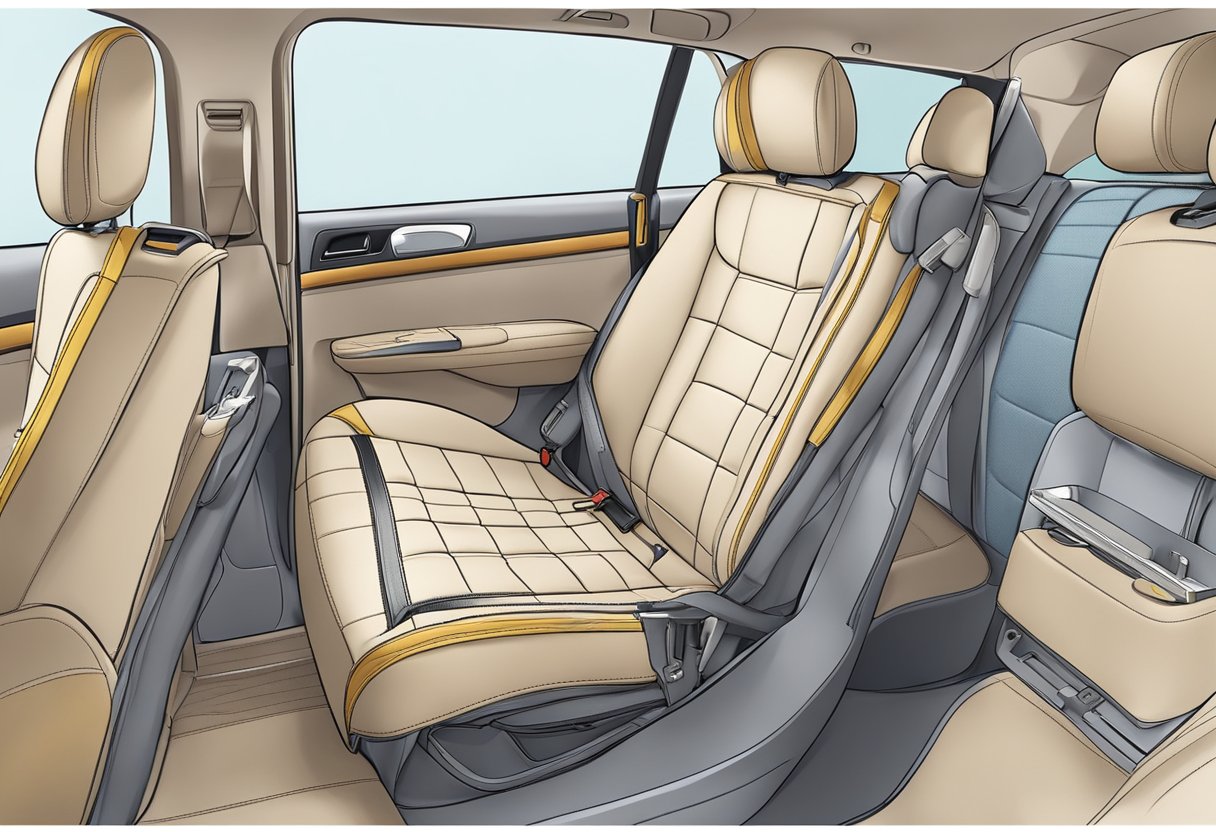
Choosing the right car seat is crucial for ensuring a child’s safety during travel. Several factors must be considered, including vehicle compatibility, the child’s specific needs, and safety ratings.
Assessing Your Car’s Compatibility
Before purchasing a car seat, it is essential to check compatibility with the vehicle. Many car seats have specific requirements for installation. Parents should consult their vehicle owner’s manual for guidelines on car seat use.
Most cars have LATCH (Lower Anchors and Tethers for Children) systems, which simplify installation. Parents can test the car seat in their vehicle to ensure it fits securely. It should not move more than one inch side to side when installed. This step ensures safety and correct positioning.
Considering Child’s Age, Weight, and Height
Car seats are designed for specific age, weight, and height ranges. Parents must understand these criteria when selecting a car seat.
- Infant car seats are for newborns and babies up to 22-35 pounds. They should be installed rear-facing.
- Convertible car seats can be used in both rear-facing and forward-facing positions. They often accommodate children from birth up to around 65 pounds.
- Booster seats are for older children, usually from 40 pounds to 100 pounds. They help position the seat belt correctly on the child’s body.
Choosing a car seat based on these factors helps meet safety regulations and keep the child secure.
Reviewing Safety Ratings
Safety ratings provide valuable insights into the performance of car seats during crashes. Parents should look for seats that have been tested and rated by organizations like the National Highway Traffic Safety Administration (NHTSA) and Consumer Reports.
When reviewing ratings, focus on:
- Ease of installation: A car seat that is easy to install correctly promotes safety.
- Crash test results: Higher ratings indicate better performance during collisions.
- Features: Additional safety features, such as side-impact protection and energy-absorbing foam, enhance safety.
Check the latest reviews and updates to ensure choosing the safest option available.
Pre-Installation Checklist
Before installing a baby car seat, it is essential to prepare properly. This includes reading the manual, gathering the right tools, and making sure the vehicle is ready for the installation. These steps will help ensure safety and compliance with guidelines.
Reading the Car Seat Manual
The car seat manual contains crucial information specific to that model. Each car seat may have different requirements and instructions. It is vital for parents or caregivers to read this manual carefully.
Key points include installation methods and safety features. Look for guidelines about harness adjustments and weight limits. Understanding these details can help prevent common mistakes.
Additionally, check for any warnings or precautions. Misinstalling a car seat can lead to dangerous outcomes. Familiarizing oneself with the manual sets the foundation for a secure installation.
Gathering Necessary Tools
Having the right tools ready makes installation easier. Typically, the tools needed include a seat belt and possibly a locking clip. Some car seats come with their own installation systems, like LATCH (Lower Anchors and Tethers for Children).
Make sure to have the vehicle’s owner manual on hand too. This manual helps understand the specific requirements for attachment points.
In some cases, a level or measuring tape may be useful to ensure correct positioning. Spending a few minutes to gather these items prior to starting saves time and reduces frustration during installation.
Preparing the Vehicle
The vehicle needs to be prepared for a safe installation. First, choose the appropriate seating location. The back seat is the safest spot for children under 13 years old.
Clean the area where the seat will be installed. Remove any debris or items that might interfere with the car seat fit.
Make sure the seat is in an upright position as recommended in the manual. If the car seat is rear-facing, ensure it is placed at the correct angle. Adjust the vehicle seat if necessary for better fitment and safety.
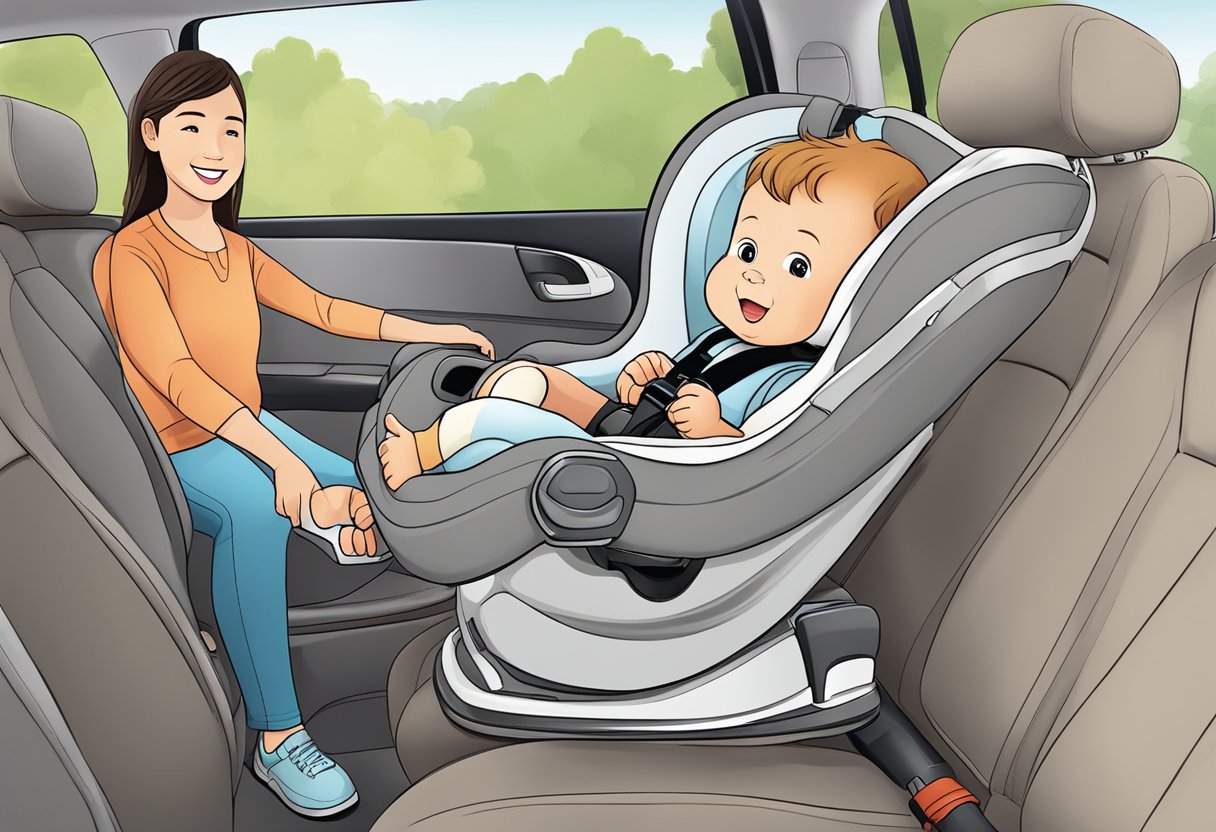
How to install baby car seat safely
Installing a baby car seat correctly is crucial for safety. This process includes positioning the car seat, adjusting the base angle, attaching the base securely to the vehicle, and ensuring the car seat is fastened properly.
Positioning the Car Seat
The safest position for a car seat is in the back seat. Ideally, it should be placed in the middle spot, away from side airbags. This location minimizes the risk of injury during a crash.
Before placing the car seat, verify it fits well within the vehicle. The base should not hang over the edge of the seat. If using a rear-facing seat, ensure it is placed at the correct angle. Some models have indicators that show the correct recline.
Adjusting the Base Angle
Proper base angle adjustment is vital for the baby’s safety. The car seat should be in a semi-reclined position. This position allows the baby to keep their airway open.
Look for built-in angle indicators on the car seat. These indicators often help determine if the seat is at the right angle. If adjustments are necessary, use the recline adjustor on the car seat base until it is correct.
Attaching the Base to the Vehicle
Attaching the car seat base firmly is essential. The base must not move side-to-side or front-to-back more than one inch once installed.
Most bases attach using either LATCH (Lower Anchors and Tethers for Children) or the vehicle’s seat belt. For LATCH, locate the anchors in the vehicle and secure them. If using a seat belt, ensure it is locked in place after threading through the base.
Securing the Car Seat With a Seat Belt
When using a seat belt, the process is straightforward. First, place the car seat on the base. Next, pull the seat belt across the car seat and buckle it in.
Check that the belt is tight by pulling on it. Make sure it clicks into place securely. Then, perform a final check. The car seat should not move more than one inch in any direction when pulled. This step is key to ensuring maximum safety during travel.
Securing Your Child in the Car Seat
Properly securing a child in a car seat is essential for safety. This involves adjusting harness straps, buckling the harness correctly, and performing final checks to ensure everything is secure.
Adjusting Harness Straps
The harness straps must fit snugly over the child. Start by placing your child in the seat with their back flat against it.
Adjust the straps so they sit at or below the child’s shoulders for infants. This helps keep them secure.
Make sure the straps are not twisted. If they are, it can create gaps that reduce safety.
A quick check can be done by pulling the straps. They should feel snug against the child with no slack.
The harness should allow no more than one finger between the strap and the child’s collarbone.
Buckling the Harness
To buckle the harness, bring each side of the harness together. Click the buckle in place over the child’s lap.
The strap should rest across the child’s thighs, not their stomach, to assure safety.
Pull the harness tight until it is snug. It should not pinch the child’s skin.
Ensure the chest clip is positioned at armpit level to keep the shoulder straps in place.
This prevents the straps from sliding off during a ride, enhancing security and comfort.
Final Checks for Security
After securing the child, perform final checks. First, make sure the car seat is tightly installed in the vehicle.
Give it a firm shake. If it moves more than an inch at the base, it may not be secure.
Next, ensure the harness is snug, with no slack.
Check that the chest clip is still at armpit level as this helps keep the child safe during travel.
By regularly performing these checks, parents can ensure their child is secure and safe while on the road.
Post-Installation
After installing a baby car seat, it is essential to ensure that it is secure and meets safety standards. This includes testing the car seat stability and considering a professional inspection if needed.
Testing Car Seat Stability
To ensure safety, testing the car seat’s stability is crucial. First, grasp the base of the car seat where it connects to the vehicle. Gently wiggle it back and forth. The car seat should not move more than an inch side to side or front to back.
Next, check that the seat belt or lower anchor connectors are properly tightened. A properly secured car seat stays in place during a sudden stop or crash.
Another test involves checking the recline angle. Many car seats have indicators to show when they are at the correct angle for the child’s age and size. Following the manufacturer’s guidelines here is vital for safety.
Seeking Professional Inspection
Even after a careful installation, parents may want added reassurance. Seeking a professional inspection can provide peace of mind. Many local hospitals, fire stations, and community organizations offer free car seat checks.
During an inspection, a certified technician will check the car seat’s installation and ensure it meets safety standards. They can offer tips on proper use and help identify any potential issues that may have been missed.
Parents should schedule this inspection, especially if they are unsure about the installation. It is a proactive step in keeping a child safe while traveling.
Maintenance and Safety
Proper maintenance and safety checks are vital to keep a baby car seat in optimal condition. Regular cleaning, checking for recalls, and tracking the expiration date ensure that the car seat remains safe for use.
Regular Cleaning
Keeping a car seat clean helps maintain its function and safety. Regularly wiping down the surface removes dirt and spills. Most car seat covers are removable and machine washable. Follow the manufacturer’s instructions for cleaning to avoid damage.
Cleaning Steps:
- Remove any detachable covers.
- Use mild soap and water to clean plastic parts.
- Air dry all fabric parts completely before reassembling.
Avoid harsh chemicals that may weaken materials. Regular cleaning also helps prevent odors and germs, providing a healthier environment for the child.
Checking for Recalls
Staying informed about recalls is essential for safety. Manufacturers may issue recalls for various reasons, including safety defects. Parents should regularly check for any announced recalls on the car seat.
How to Check:
- Visit the NHTSA website for a list of recalls.
- Enter the car seat’s model number and manufacture date.
- Keep an eye on news updates or your car seat manufacturer’s website.
If a recall is found, follow instructions on how to return or fix the car seat. This step can prevent potential safety hazards.
Car Seat Expiration Tracking
Every car seat has an expiration date, usually between six to ten years after manufacture. Using a car seat past its expiration is risky. Parents should track the date when purchasing the seat.
Tracking Tips:
- Look for the expiration sticker on the car seat or check the manual.
- Write the expiration date in a calendar or set a reminder on a phone.
- If the seat is nearing expiration, consider replacing it for enhanced safety.
Being aware of expiration helps ensures that the car seat meets safety standards and provides proper protection for the child. Always prioritize current safety guidelines when using a car seat.
Travel Tips With a Car Seat
Traveling with a car seat requires careful planning and knowledge of specific procedures. Understanding airport security and rideshare services will ensure a smoother journey.
Airport Security and Car Seats
When traveling with a car seat, it is vital to prepare for airport security. Take the car seat out of its bag or cover to avoid delays. Place it separately on the conveyor belt for screening. Security personnel may need to inspect it manually.
Tips for quick navigation:
- Label your car seat with your contact information.
- Arrive early to account for the extra time needed for security checks.
- Use a car seat travel belt to connect it to luggage or a stroller, making movement through the airport easier.
Following these steps can help reduce stress and ensure the seat is secure for flight.
Rideshare Services and Car Seats
Using rideshare services with a car seat requires planning. Most rideshare companies like Uber or Lyft allow passengers to bring their car seats. However, they do not provide them.
Key considerations:
- Bring your own car seat to ensure safety.
- Install the car seat properly in the vehicle before the ride starts.
- Check the rideshare app for options; some have roles for “Car Seat” or “Family” services.
These steps help ensure that the child’s safety is prioritized during rides, giving parents peace of mind while traveling.
Frequently Asked Questions
This section addresses common questions about baby car seat installation. It includes specific methods for securing car seats, safety considerations, and tips to avoid mistakes.
What is the correct method to secure an infant car seat with a base?
To secure an infant car seat with a base, first, place the base in the back seat. Make sure it is level and tight by pressing down on the base while tightening the seatbelt or LATCH straps. The base should not move more than an inch when pulled at the edge.
Can you detail the steps for installing a rear-facing car seat with a seatbelt?
To install a rear-facing car seat with a seatbelt, first position the seat on the back seat and thread the seatbelt through the designated path. Buckle the seatbelt and pull it to tighten, ensuring a snug fit. Lock the seatbelt if possible, and check that the seat is securely in place by trying to move it side to side.
How do you properly install a forward-facing car seat using LATCH?
To install a forward-facing car seat using LATCH, locate the lower anchors in the vehicle’s back seat. Attach the LATCH connectors from the car seat to these anchors. Pull the straps to tighten, ensuring the car seat does not shift more than an inch when tested. Always check the car seat manual for specific instructions.
What are the safety considerations when using a car seat without a base?
Using a car seat without a base requires careful attention to securing the seat. Parents should ensure the car seat is installed tightly using the seatbelt. The harness should be adjusted correctly for the baby’s size, and parents must check the angle to keep the child safe.
What are common errors to avoid when installing a baby’s car seat?
Common errors include not reading the car seat manual, failing to tighten the seat properly, and skipping the safety checks after installation. Parents should also avoid using a car seat that has been in an accident or that is past its expiration date.
How should a newborn be placed in a car seat when leaving the hospital?
When placing a newborn in a car seat, ensure the baby is positioned at a slight angle to prevent slouching. The harness should be snug but not overly tight, and the chest clip should be at armpit level. Always check that the baby’s head is supported and secured safely in the car seat.

